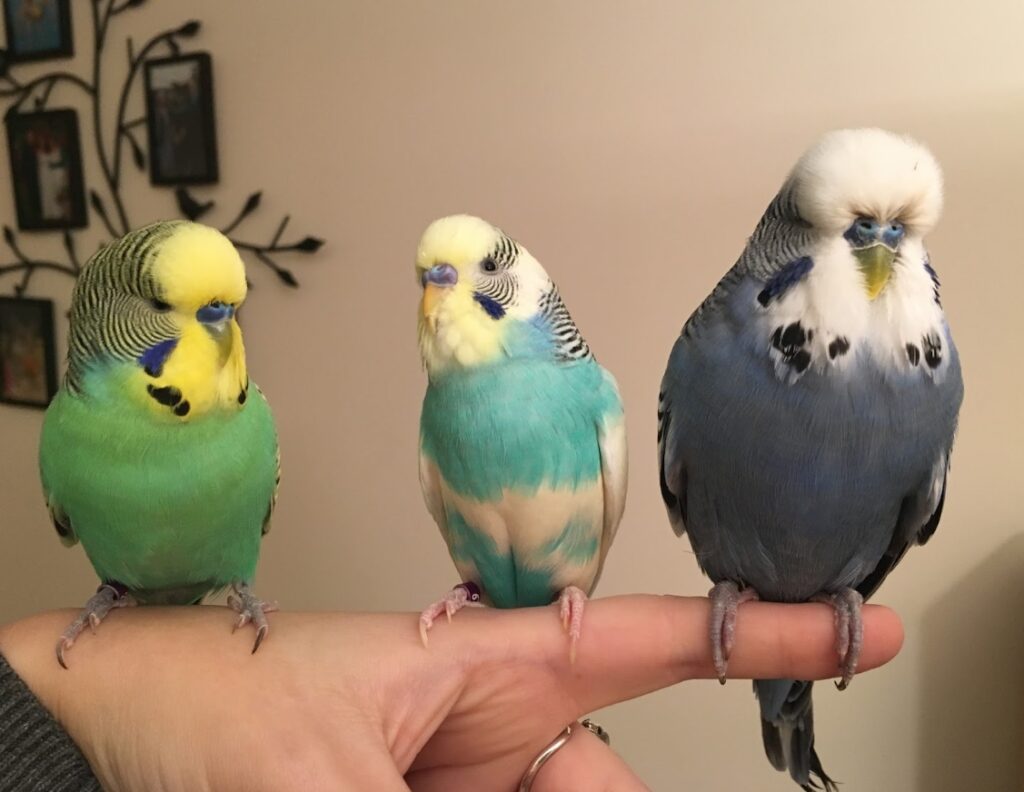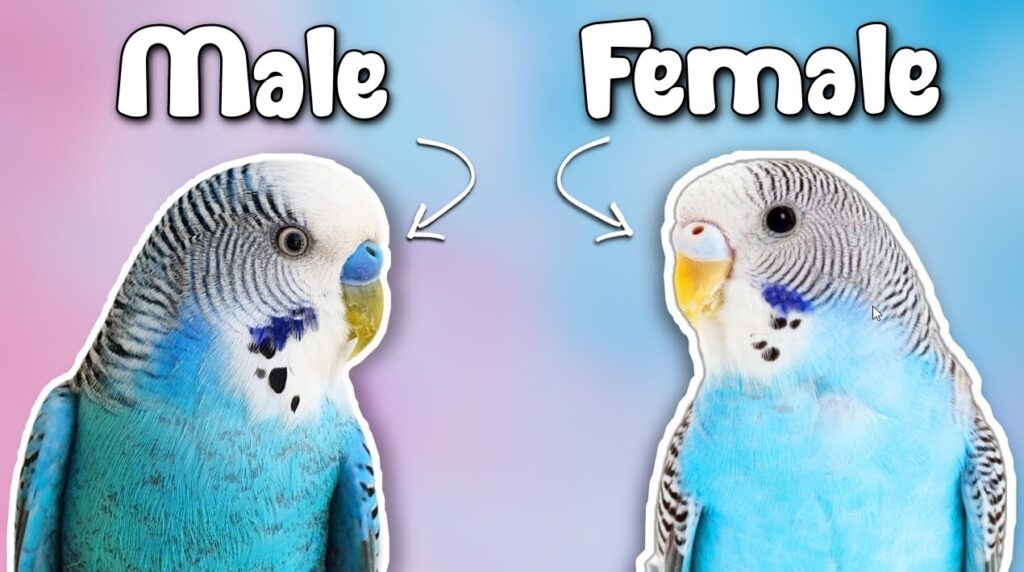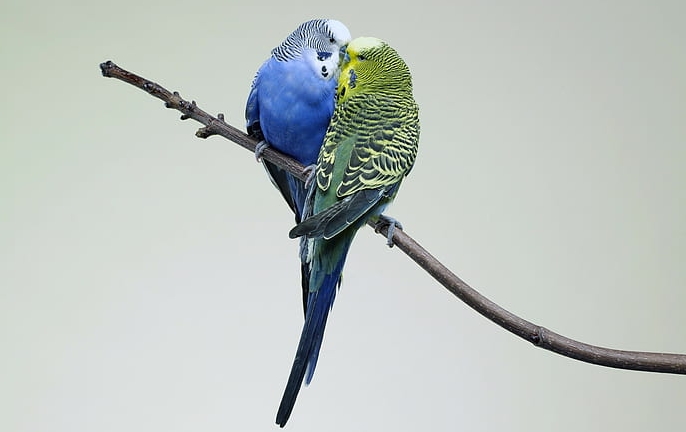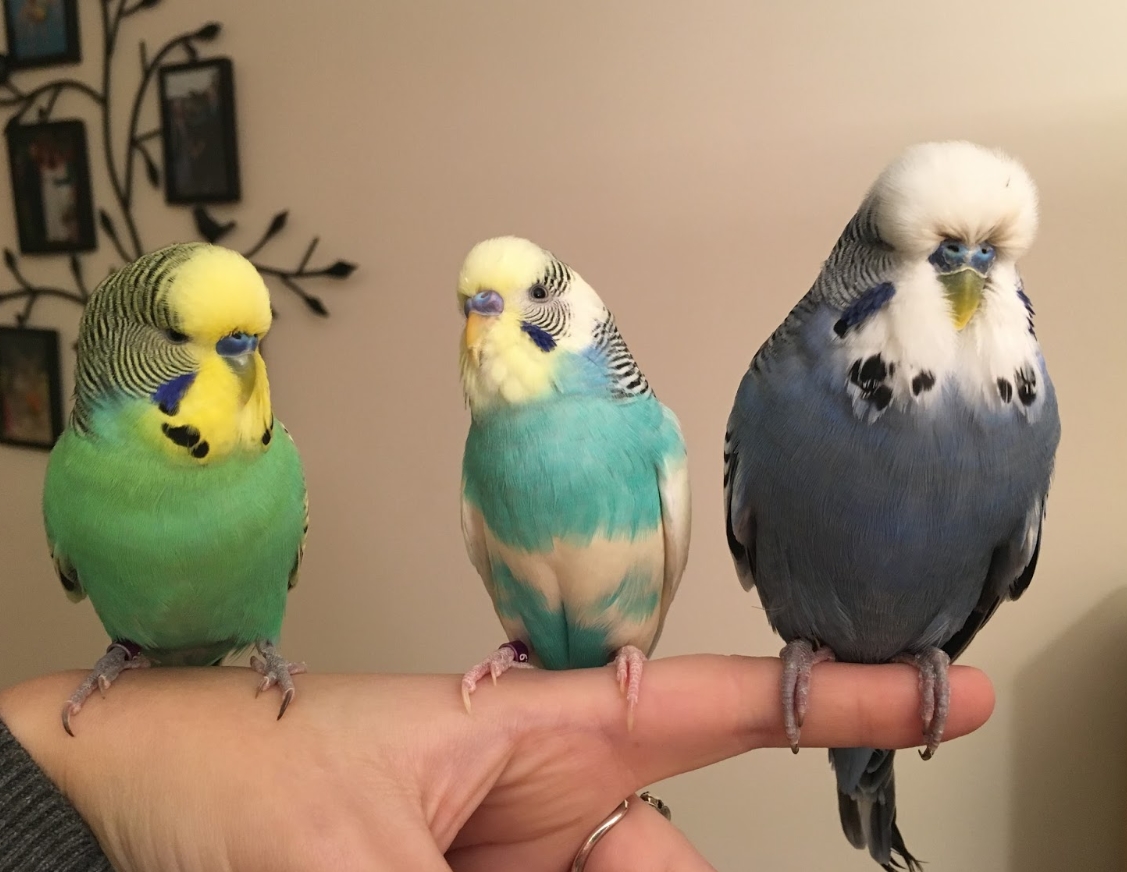Budgerigars, also known as budgies, are popular pet birds that are loved for their playful and social personalities. These small, colorful birds are native to Australia and have become a popular choice for bird enthusiasts around the world. In this article, we will explore the basics of budgerigar care and offer tips on how to keep your pet budgie happy and healthy. Whether you are a first-time bird owner or an experienced bird keeper, this article will provide you with useful information on how to provide a comfortable and stimulating environment for your budgerigar. We will go through different commonly asked questions, to understand our budgie’s needs.

What is the best feed for a budgie?
Budgies need a balanced and healthy diet to stay healthy and happy. The best food for a budgie is a mixture of seeds and fresh vegetables. You can buy budgie seed mixes from pet stores or online, which contain a variety of seeds like millet, sunflower, and canary seeds. You can also give your budgie fresh vegetables like carrots, spinach, and broccoli, which are rich in vitamins and minerals. It’s important to give your budgie fresh water every day and to clean their food and water dishes regularly. Avoid giving your budgie sugary or fatty foods, as these can be harmful to their health. With a balanced diet and fresh water, your budgie will be healthy and happy!
What is the best way to feed a budgerigar?
Feeding a budgerigar is an important part of keeping them healthy and happy. The best way to feed a budgie is to give them a mix of seeds and fresh vegetables. You can buy budgie seed mixes from pet stores or online, which contain a variety of seeds like millet, sunflower, and canary seeds. It’s important to give your budgie fresh vegetables like carrots, spinach, and broccoli, which are rich in vitamins and minerals.
You should offer your budgie fresh water every day, and clean their food and water dishes regularly to keep them free from bacteria. It’s also a good idea to give your budgie a cuttlebone or mineral block to help keep their beak trimmed and provide them with additional nutrients.
Remember to monitor your budgie’s weight and adjust their food accordingly. Too many seeds and not enough vegetables can lead to obesity and health problems. With a balanced diet and fresh water, your budgie will be healthy and happy!
How much water should a budgerigar drink per day?
Just like humans, budgerigars need water to stay hydrated and healthy. A good rule of thumb is to offer your budgie fresh water every day and to refill their water dish as needed.
The amount of water budgie drinks can vary depending on their size, activity level, and diet. On average, budgies will drink around 10% of their body weight in water each day. For example, if your budgie weighs 30 grams, it should drink around 3 milliliters of water per day.
It’s important to keep your budgie’s water dish clean and free from bacteria. You can clean their water dish every day and replace it with fresh water to ensure they have a clean and safe source of hydration. With fresh water and a healthy diet, your budgie will stay hydrated and healthy.
Budgie lifespan? or How long do budgies live and how to improve it?
Budgie birds are popular pet birds that can live up to 10-15 years with proper care. To improve their lifespan, it is important to provide them with a healthy diet of fresh fruits, vegetables, and high-quality birdseed. They also need a clean and spacious cage, plenty of toys and perches, and daily exercise and social interaction. Regular visits to an avian veterinarian can help detect and treat any health issues early on. It’s important to avoid exposing budgies to toxins such as tobacco smoke and household cleaners, as they can harm their delicate respiratory system. With proper care and attention, budgies can make wonderful, long-lived companions.
How to know Budgerigar gender differences?

One question people often ask is, “How can I tell the gender of my budgie?” It can be tricky to tell male and female budgies apart just by looking at them because they look very similar. One way to determine the gender of your budgie is to look at the color of its core. The cere is the area above the beak where the nostrils are located. In adult males, the cere is usually blue, while in adult females, it’s usually brown or tan. However, this method is unreliable, especially in young budgies or those with unusual colorations. Another way to tell is by observing their behavior. Males tend to be more vocal and active, while females may be more reserved. Ultimately, the best way to confirm the gender of your budgie is to have a DNA test done by an avian veterinarian.
What are Budgies’ common health problems?
Budgerigars are generally healthy birds with a lifespan of 10-15 years. However, they can develop some common health problems. One of the most common health problems in budgies is respiratory infections, which can be caused by exposure to draft, smoke, or other irritants. They can also suffer from mites and lice, which can cause itching, feather loss, and skin irritation. Budgies may also develop digestive problems, such as diarrhea or crop impaction, which can be caused by a poor diet or overfeeding. Other health issues that budgies may experience include egg-binding in females, tumors, and injuries. If you notice any signs of illness, such as lethargy, loss of appetite, or changes in behavior or appearance, it’s important to take your budgie to an avian veterinarian as soon as possible. With prompt treatment, many common health problems in budgies can be successfully treated.
How can I train my budgerigar to talk?
Budgerigars are popular pet birds that can learn to talk. However, not all budgies will talk, and it takes time and patience to train them. To start training your budgie to talk, you need to spend time talking to them every day in a calm and soothing voice. Use simple words or phrases and repeat them often. You can also play recordings of other budgies talking to help your bird learn. Once your budgie starts to mimic your words or phrases, reward them with treats or praise. Be patient, as it can take weeks or even months for a budgie to learn to talk. It’s important to remember that not all budgies will talk, and some may only learn a few words. It’s also important to keep your budgie’s health and happiness in mind during training and to never force them to talk if they are not interested. With patience and practice, however, many budgies can become talented talkers and delightful companions.
How often should I clean my budgerigar’s cage?
Budgerigars are active birds that spend a lot of time in their cages, so it’s important to keep their living environment clean. You should clean your budgerigar’s cage at least once a week, but it may need to be cleaned more often if it becomes particularly dirty or if your bird has health problems. To clean the cage, first, remove your budgie from the cage and place it in a safe area. Then, take out all the toys, perches, food and water dishes, and any other accessories from the cage. Clean the cage with a mild bird-safe cleaner, rinse everything well with water, and let everything air dry before putting everything back in the cage. You should also spot-clean the cage daily by removing any leftover food or droppings to help prevent bacteria buildup. By keeping your budgerigar’s cage clean, you can ensure that your pet stays healthy and happy.
Do budgerigars require companionship or can they live alone?

Budgerigars are social birds that naturally live in large flocks in the wild. In captivity, they can live alone but they prefer companionship. Budgies are very social animals and thrive on interaction with other budgies or with their human caregivers. If a budgie is kept alone, it may become bored, lonely, and even depressed. They may also become overly attached to their human caregiver, which can lead to separation anxiety if the caregiver is away for extended periods. If you have only one budgie, it’s important to spend a lot of time with them, providing them with plenty of toys, stimulation, and attention. However, it’s recommended to keep at least two budgies together to allow for social interaction and companionship. If you do decide to keep more than one budgie, it’s important to introduce them slowly and monitor their behavior to ensure they get along well.
What kind of toys should I provide for my budgerigar?
Providing toys is essential to keep your budgerigar active and stimulated. There are many different types of toys that can be suitable for budgerigars. Some popular options include swings, ladders, bells, and mirrors. It’s important to choose toys that are safe for your bird and are made of bird-safe materials. Toys made of wood, natural fibers, and bird-safe plastics are a good choice. You can also make your own toys using materials such as paper towel rolls, non-toxic glue, and natural fibers. Providing a variety of toys can help keep your budgie entertained and prevent boredom. You can rotate the toys every few weeks to keep things fresh and interesting. Budgerigars also enjoy foraging toys, which require them to work for their food, such as treat dispensers or puzzle toys. Providing toys for your budgerigar is an important part of keeping them healthy and happy. Here is a Budgerigar – Wikipedia post, if you want to learn more.
What is the best way to keep my budgerigar’s beak trimmed?
Budgerigars’ beaks grow constantly throughout their lives, and it’s important to keep them trimmed to prevent overgrowth, which can make it difficult for the bird to eat and even cause health problems. The best way to keep your budgerigar’s beak trimmed is by providing a variety of perches made of different materials and textures, such as concrete or sandpaper-covered perches. These perches help wear down the beak naturally as the bird perches and moves around. You can also provide your budgie with a cuttlebone, which is a natural source of calcium and helps keep the beak trimmed. Additionally, providing toys that require your budgie to chew or gnaw on them can also help keep the beak trimmed. If your budgie’s beak becomes overgrown or misshapen, it’s important to take them to a veterinarian who specializes in bird care to have the beak professionally trimmed. Regular beak maintenance is an important part of budgerigar care to ensure that your bird remains healthy and happy.
Please keep in mind that each budgerigar may have unique needs and behaviors, so it’s always best to consult with a veterinarian or experienced bird keeper for personalized advice.
You have Cockatiel birds at home. or planning to buy then must read this post, Cockatiel Birds: The Ultimate Guide to Caring for Your Feathered Friend – NiceFarming.com.
Hello, readers and pet lovers share your opinions to help us and all the readers to know more about pets. sharing is caring and together we can make our pet’s life happy and healthy. Thanks
